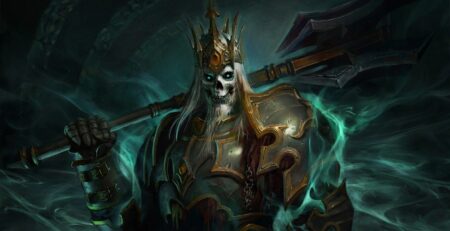Guest Post by Ceridwen Millington

You might think that Resident Evil Village is positioning itself as yet another fresh start for the franchise. The biggest suggestion of that is how Capcom has dropped the 8 from the title, apparently leaving behind the baggage of 25 years of games. Presumably, the intention is to entice gamers who might balk at the promise of backstory stretching across the years. There is indeed an enormous, knotted mass of storytelling across numerous main installments as well as spin-offs, encompassing an array of heroes, villains, and wildly differing tones. There is little possibility that Capcom will totally reject all that, and history has proven that it will always throw some nostalgia in for the fans. What direction, then, can we expect and hope for this last installment to take this complex lore?
The return of Ethan Winters, the faceless hero of Resident Evil 7: Biohazard, hints at the type of story we’ll be given. Ethan is very much a fish out of water rather than a hardened, professionally trained combatant against bio-terror. The story isn’t likely to be one, then, where there is some great conspiracy at play, but one driven by the human element of his need to protect those that he loves. What we should definitely be steeling ourselves for is a tale that puts horror at the forefront, even if Ethan might be a little more ready for action this time around.
Chris Redfield is returning, too, and the fact that he takes pride of place on the cover art is significant. He’s been a crucial character from the very first game and throughout the series, regularly appearing or being referenced — and so his prominent position here suggests an intimate tie to Resident Evil at large. But what’s crucial narratively is that Chris’ motivations are currently impossible to determine, leaving open the possibility that he could be a villain in what would be a mythology-upending change. It’s certainly intriguing to see what part he might have to play in the story of Village, and this swirling sense of mystery suggests a desire to not slavishly relive the past.
The setting appears to be somewhere entirely new, but it similarly plays with the fans’ connection to what’s come before. It’s set in a European village with new villains and enemy types, positioning this on the surface as an original experience like Resident Evil 7‘s trip to the swamps of Louisiana. Resident Evil 4 fans, though, will find the key locations of the titular village and an enormous castle as a homage to its Spanish environs. We’re not necessarily going to see any elements from it appear directly in Village, but the link to that largely standalone sequel suggests that we can expect a similarly original tale: Lady Dimitriescu and the like will likely be at the root of the plot rather than a known evil like the Umbrella Corporation.
A major problem is, though, that as the story moves further and further away from its initial threat of a lab-built zombie virus it relies on tediously familiar connective tissue. All of the big baddies’ plots involve weird science and grey laboratories, with even the parasite-created monstrosities of Resident Evil 4 loosely based on real biology. Here the creatures the protagonist fights are not the zombies of earlier titles but the typically supernatural creatures of vampires and werewolves, and there’s very little likelihood that something alien to the franchise like the supernatural will play a part. Instead, there’s a stronger possibility that a familiar bio-tinkerer like the Umbrella Corporation will make at least a cameo and an unwelcome probability that the game’s end will take us away from the locations which give Village its appeal.
A warning can be seen in the massive drop in quality of Resident Evil 7‘s final third, a portion of the game that tried to tie the events in Louisiana to the bio-weapons which dominate the franchise. This late-game shift took disappointed gamers to deeply uninspiring locations of an abandoned ship and a dark, equally empty mine — all to reveal a secret key player who felt totally divorced from what had come before. The disappointment wouldn’t have occurred had it been telegraphed from the start to expect a return to the safe and familiar, but instead, the impression had been a tangential link to previous Resident Evil installments. It seemed like a lack of courage and willingness to upend expectations without holding onto a safety net.
Perhaps the backlash to the end of the seventh mainline title might mean decisive action from Capcom for a genuinely fresh start. What would be rejuvenating is to see a confident approach in one direction, whether that’s embedding this into the context of everything that’s come before or treating it like a fiendish, focused, and original anthology tale. Unquestionably the best Resident Evil of recent years is the remake of Resident Evil 2, a game that feels confident because it’s focused on crafting a straightforward adventure that puts gameplay above story — and ultimately makes survival much more compelling.
If Resident Evil Village wants to reach the goal of becoming a best-loved sequel then its best bet is to embrace chaos. Resident Evil 4 might be an obvious touchstone for this game, but they can’t hope to resemble each other if this upcoming release doesn’t have the confidence to upend any expectations of where the tale might take us. The concern, though, is that Capcom has failed as much as it has succeeded in that goal, and its greatest success in creating a ripping yarn has been in giving a fresh coat of paint to the over 20-year old Resident Evil 2. Resident Evil Village might determine whether the next 25 years sees the company try to brave new terrain or spend decades retreading the series’ comparatively simple history.
Resident Evil Village is available on PlayStation 4 | 5, PC, Xbox One, Xbox Series X|S May 7, 2021.




